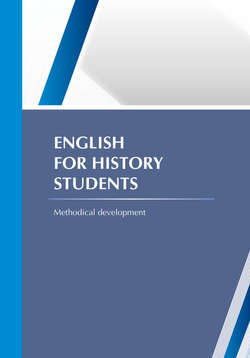Читать книгу English for history students - Karlygash Aisultanova - Страница 2
INTRODUCTION INTO ARCHAEOLOGY
ОглавлениеHistory of Kazakhstan Archaeology
In Kazakhstan the culture of the ancient nomads was formed during the Bronze Age. The Kazakh archaeologists give priority to the study of this culture. Civilization came to the steppe with some distinctive features such as the creation of state organizations, constant trade, cultural and political relations between the steppe and mountain zone and cultural world conception (proved by the funeral sanctuary architecture reflecting the ideology and social stratification of the society).
Discovery of famous monuments of the Saka culture like the kurgan (barrow) of Issik, Chilik, the mausoleum of Tegisken and Yagaraka, the Saka cities of Chirik-Rabat and Balandy make it possible to gain more historical data. Based on findings of written language and famous cultural art works it has been determined that the ancient Sakae emerged in the territory of Kazakhstan in the middle of the last millenary B. C.
Therefore, the beginning of the state formation in the territory of Kazakhstan goes nearly one thousand years back. It may have been contemporary with the ancient states of the Achaemenids in Iran and the ancient Greece, Chinese Han dynasty, Bactria, Chorezmia.
From the III century B. C. onward, the territory of Kazakhstan were inhabited by communities of state formations such as the Usun in Semirechye and the Kangiu in the South of Kazakhstan. The population of these states were busy with cattle breeding and farming. In the territory of Kangiu fortified settlements with stationary dwellings of green bricks appeared and urban construction was developed. Highly developed settlements and urban culture were formed in the Aral sea area, around the Djety-Asar hills. A number of major settlements were surrounded by necropolis, however they were connected with the dissemination of the Sogdian population along the international trade roads.
Turk cultures settled in the oases and cities of Central Asia (Chash, Usrushana, Ferghana, Tokharistan), greatly influenced by the development of cultural life in the towns of Central Asia.
During the late medieval centuries, the cattle breeders, settled populations and dwellers were interacting in the same natural ways as in the earlier periods of history: through economic and cultural relations within the framework political unity such as the Karakhanid State. The town and steppe were not two opposed world; they had mutual economic foundations. The growth of towns in Central Asia from IX century to XIII century in most cases was connected with the process of the nomads settling. The settled nomads brought much steppe folklore into urban life and in this way the urban culture was formed. The culture was distributed not only in the South but in Central, West and East Kazakhstan.
The cultural and economic relations of nomads and town dwellers were revealed later by the study of the history of the development of Ak-Orda, Mogulistan and the Kazakh Khanate.
The latest towns of the Middle Ages Sairam, Sauran, Signak and Suzak were centres for the establishment of the economic connections between nomads and farmers. Here the cultural and trade exchanges took place not only between the town dwellers of Southern Kazakhstan and nomads of Sari-Arka but also with the people of Central Asia, the Volga region and East Turkestan. These exchanges were of great importance for the political, economic and cultural life of the Kazakh Khanate.
The study of archaeological monuments in Kazakhstan enabled the scientists to reconstruct the mechanism of interrelation between these different cultures. This work provided evidence that the territory of Kazakhstan was one of the historical-cultural centres and that interactions of nomads and settled populations led to a mutual enrichment of both cultures. Many achievements of Kazakh culture lie in the heart of such synthesis.
The achievements of the Kazakh archaeological science have been acknowledged at a number of general meetings and international conferences. In addition Kazakhstan archaeologists have participated in the development international projects, including UNESCO «Great Silk Road: roads of dialogue» and joint scientific researches with the archaeologists of Russia, France, Belgium, the USA and Poland.
The communication centre of the Institute archaeological achievements is the Museum of Archaeology depending on the Academy of Sciences and directed by R. A. Bektureeva. Materials from this museum were successfully displayed at exhibitions in the USA, Japan, Germany, Sweden, Finland, Egypt and Italy.
Specific projects have focused on the protection of archaeological monuments and the history of culture. There has also been a complete and partial rating of the monuments discovered in all the regions of Kazakhstan. This includes the first volume of the «Code for Monuments of History and Culture of Kazakhtan, South-Kazakhstan region», issued in 1994 .
The problem of conservation and studying of monuments of archaeology is impossible without the organization of complete system of measures on their protection and use. In this connection, the Institute of Archaeology has suggested introducing the program of the improvement of arrangements on finding archaeological monuments, which aims to carry out the archeological examination anticipating processes of construction and economic activities. For years of the activity Institute of Archaeology named after A.Kh. Margulan has not only reached significant results, has also developed new directions, which are successfully realized, as well as the conceptual basis for further archaeological researches in Kazakhstan.
Essential Vocabulary
Tasks:
1. Read the text «History of Kazakhstan archaeology». Write and memorize unknown words and word combinations.
2. Translate the text into Russian.
Answer the following questions:
1. When did the Saka people emerge in the territory of Kazakhstan?
2. What state formations inhabited in the territory of Kazakhstan?
3. Where were highly developed settlements and urban culture formed?
4. What international projects have Kazakhstani archaeologists participated in?
5. Where were materials from the Museum of Archaeology depending on the Academy of Sciences successfully displayed?
